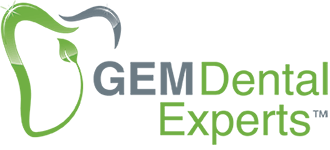
April 21, 2023
by Gabriele Maycher, CEO, GEM Dental Experts Inc. BSc, PID, dip DH, RDH
Q: As a senior hygienist, I have the privilege of mentoring new graduates or new hires to our practice, and the one term I have difficulty explaining is “endpoint” as it pertains to debridement. I question if I fully understand the term myself. Help!
A: Einstein would say, “If you can’t explain it simply, you don’t understand it well enough.” It’s true that reaching “endpoint” is the goal of periodontal debridement, but most hygienists don’t understand the term well enough to achieve endpoint themselves or to educate others. So, you are not alone.
Debridement is “the removal or disruption of bacterial plaque biofilm, its by-products, and its plaque biofilm-retentive calculus deposits from coronal and root surfaces to reestablish periodontal health and restore a balance between the bacterial flora and the host’s immune response.”1 As the initial stage of nonsurgical periodontal therapy (NSPT), meticulous and methodical debridement is key to reaching both clinical and therapeutic endpoints. Here are the benchmarks for working toward and reaching both endpoints.
- Clinical Endpoint. This evaluation is completed after nonsurgical periodontal therapy to assess the subgingival environment both visually and using an explorer to determine the tooth surface’s preparedness for healing. Keep in mind that some deposits, like calculus, can be microscopic in nature and must be removed as well.
So, how do you know if you have reached clinical endpoint? There are a few techniques and visuals you can rely on. Some are scientifically proven, and others you will observe with experience.
For starters, once all the visual and tactile deposits have been removed, use your Ultrasonic right and left inserts, and ensure you have channelled down every square inch of each tooth. This will ensure you have removed both the microscopic calculus and biofilms.
Secondly, if you have achieved endpoint, you will notice the edematous tissue has deflated, and instead of being bluish and purple in colour, it will appear less so, even bordering on opaque/white in colour. Instead of profuse, viscous, and granular (granulation tissue) bleeding, it will appear more “au jus” and almost stop bleeding.
Be sure you have factored in the appropriate amount of time to achieve clinical endpoint. If there is radiographic evidence of subgingival calculus, for example, my treatment plan will change from quadrant scaling to sextant scaling. This adjustment will ensure you have time to achieve clinical endpoint.
At this point, you have achieved clinical endpoint. However, the true test will be at the post-care appointment when you assess for therapeutic endpoint.
- Therapeutic Endpoint. This is achieved after completion of active therapy (6-week post-care for periodontitis clients, 2-week post-care for gingivitis clients) and you observe restoration of gingival health, reduction of pocket depths (PD), and gain in or maintenance of stable clinical attachment level. In other words, once your client has achieved the parameters of health (gingivitis clients: – <3mm PD and <10% bleeding on probing (BOP); periodontitis clients: – 3-4 mm PD & <10% BOP with no 4mm PD bleeding. Formation of long junctional epithelium has occurred).
Achieving therapeutic endpoint will become easier as you perfect clinical endpoint. This comes with experience, knowing that you have spent the appropriate amount of time and technique, and recognizing the positive tissue response to debridement.
While most of your clients will achieve endpoint, some with higher levels of periodontal disease may require two rounds of nonsurgical periodontal debridement and/or surgical periodontal therapy. The key is knowing when you, as a clinician, have done as much as you can nonsurgically and when to refer for surgical periodontal therapy so that endpoint can be achieved.
References:
-
- Foundations of Periodontics for the Dental Hygienist, 5th Edition, Jill S. Nield-Gehrig, Donald E. Willmann, 2019
- Darby and Walsh, Dental Hygiene Theory and Practice, 5th Edition, Bowen/Pieren, 2018






Leave a Reply
You must be logged in to post a comment.